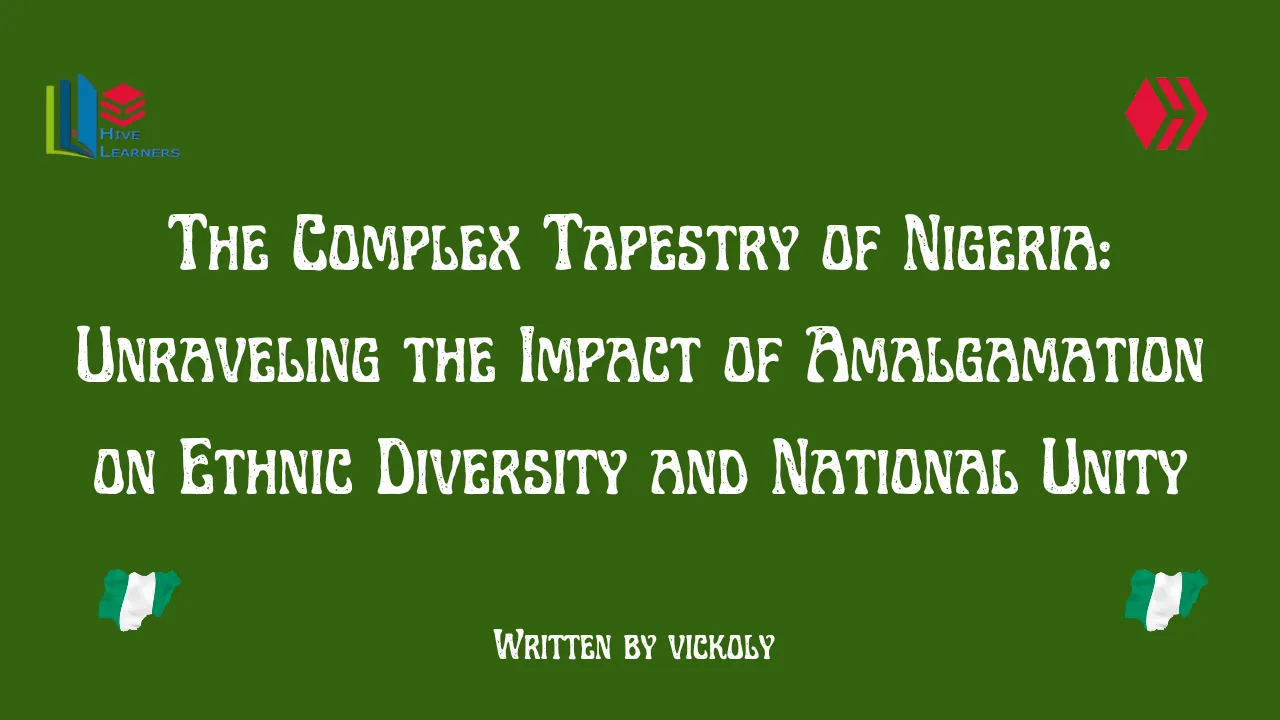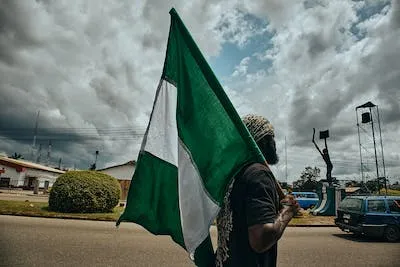The world has witnessed loads of events in the past and present, some of which have been controversial. From those filled with many mysteries to those whose truth seems to unravel by the day, these have led many to wish to have witnessed such events firsthand so as to know and understand them better. I've also got one of these events I'd love to revisit, and it's about the amalgamation of the northern and southern parts of the Niger area to found the now-well-known Republic of Nigeria.
 Image designed here
Image designed here
The amalgamation of Nigeria was said to be the brainchild of Lord Frederick Lugard, who happened to be the governor of both the northern and southern regions. According to history, the amalgamation took place by January of 1914, and that sealed the deal on Nigeria being a colony, as that amalgamation brought the northern and southern parts of the country into holy matrimony.
One of the reasons why I chose this notable event as one I wished to witness firsthand is because there are loads of unanswered questions surrounding the amalgamation, such as who are the indigenous peoples who were actively present to agree with the marriage imposes on the people, because as it stands, it seems the people had no zeal to be together, as they had loads of differences in culture, traditions, and religious beliefs that could lead to disagreement between them often, and I see no reason why they would have agreed to be married knowing fully well that both regions have little or nothing in common.
Fast forward to the present day, and we've seen each of these regions clamoring to break out of the marriage and begin their own journey separately. We've seen some segments of Arewa people from the north, indigenous peoples of Biafra from the south-east, and the Ododuwa fraction from the south-west also wanting to break out of Nigeria.
 Image by Tope A. Asokere on pexels
Image by Tope A. Asokere on pexels
That clamor simply shows the lapses that weren't taken into consideration at the point of amalgamation. To Lord Lugard, there are just the northern and southern regions; unknown to him is that within those regions lie over 250 ethnic groups with over 500 different languages and cultural heritages, and now those differences have become a strong force that's militating to break us apart.
The reasons for this rift between the people who were supposed to be one through the amalgamation can't be far-fetched, because there is obviously a lack of fairness in the distribution of power and resources between each region, and such a situation has made some regions feel like they were born to rule and others are just inferior, and I can't blame those who want to leave. I mean, why stay in a failed marriage when you can easily leave to start over for the betterment of your people?
So in a nutshell, the focal point of my aim for this particular event from 109 years ago was to not just observe those indigenous people who were involved in the amalgamation or agreed to it. But to also represent a vocal voice that explains in detail what such a marriage will turn out to be and to let people choose if they want to be in it and not just force them into it because a certain man wants it.
 Image by Emmanuel Ikwuegbu on pexels
Image by Emmanuel Ikwuegbu on pexels
Aside from lending a voice to notify the people, I also see it as an opportunity to learn about the history of my dear country and how life was compared to the present day. At that time, the slave trade was also active and still invoked, so I see that as an avenue to witness what our forefathers went through and their fight against the colonies until freedom was attained 46 years after the amalgamation.
That's all on the notable event from the part that I'll love to witness, and the article was promoted by the hive learners community features prompt, which you can read here to get more information.
Thanks for your time, have a blessed day ahead.
Return from The Complex Tapestry of Nigeria: Unraveling the Impact of Amalgamation on Ethnic Diversity and National Unity to vickoly's Web3 Blog

